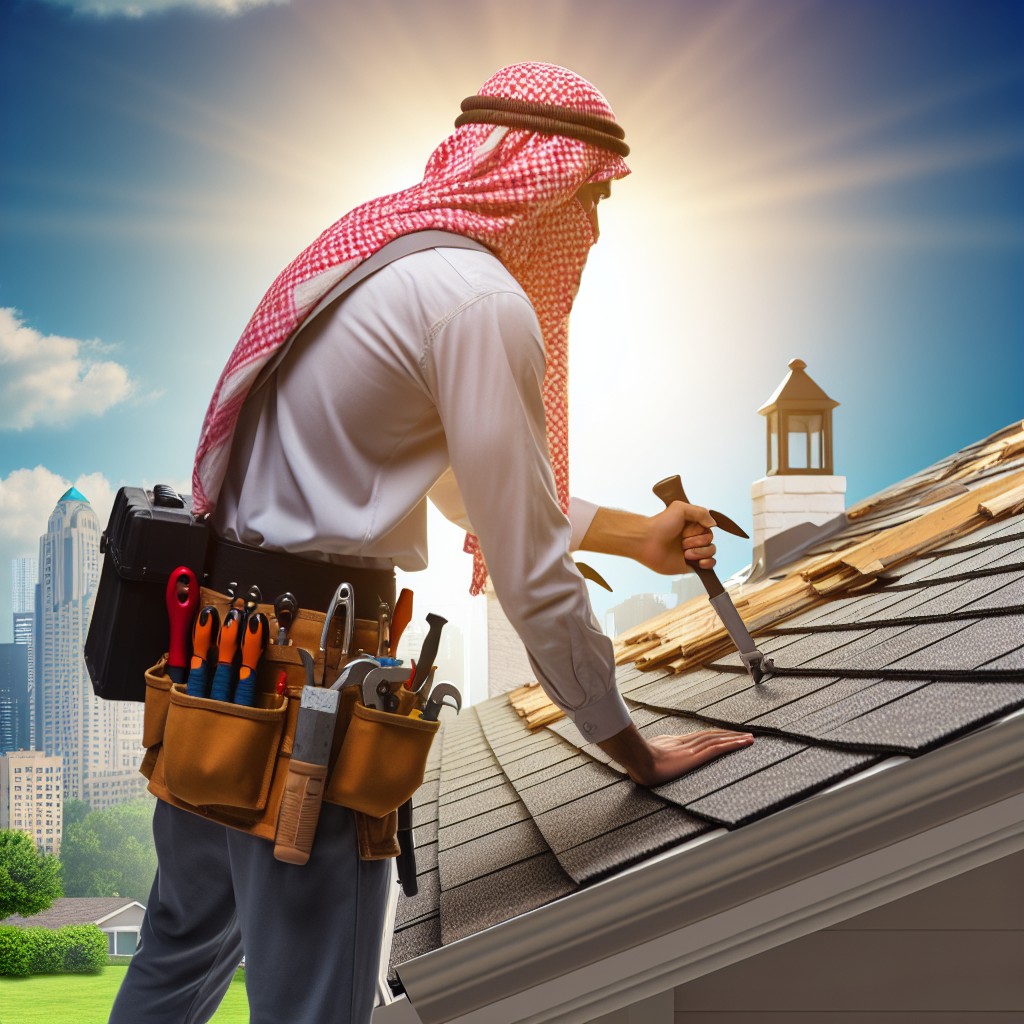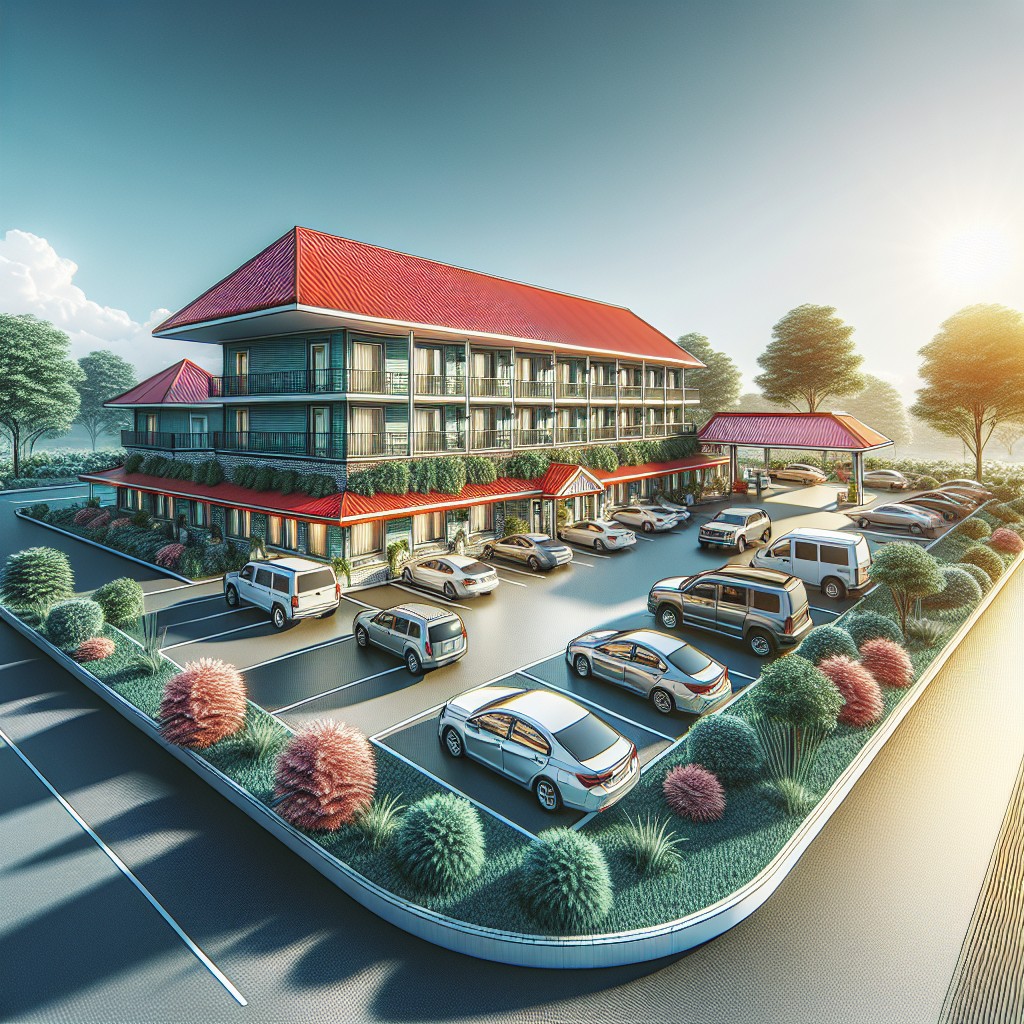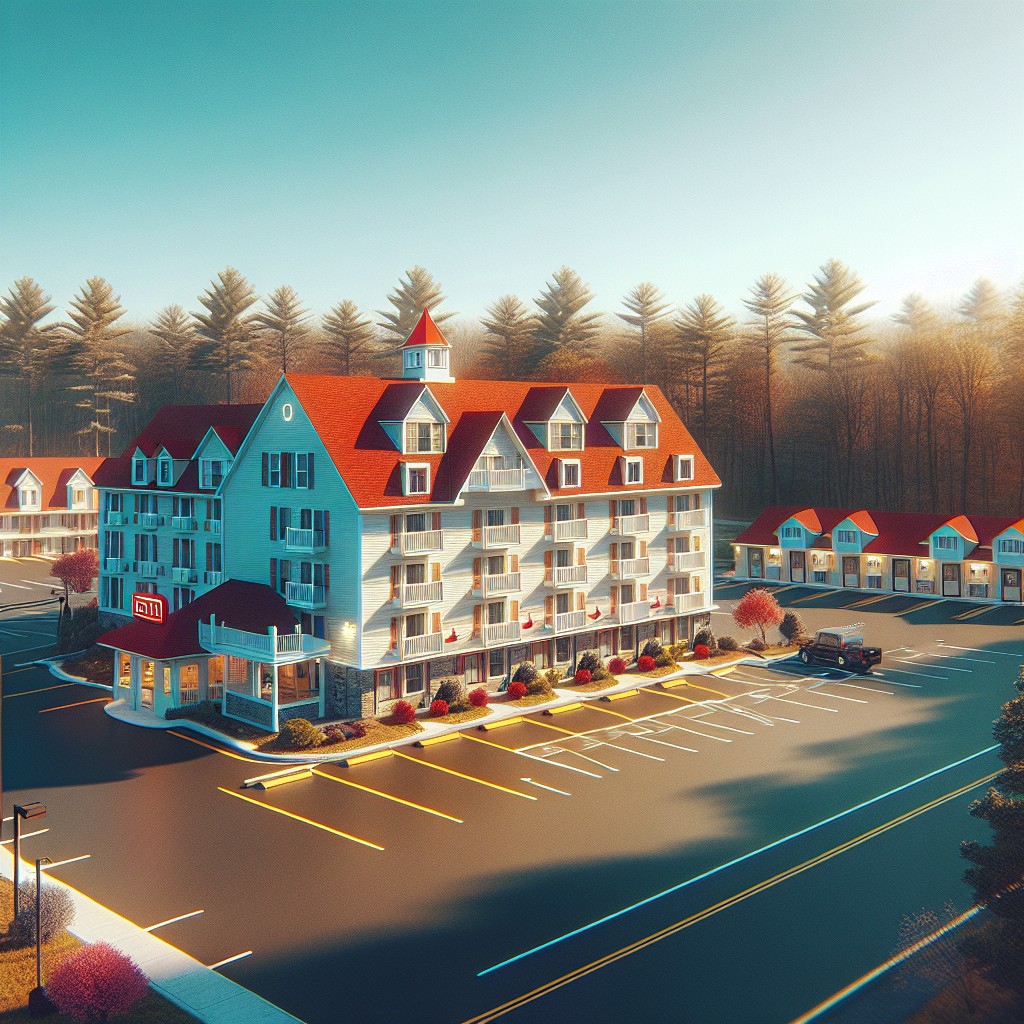Last updated on
Dive into this specific exploration of roof replacement professionals in Columbia because understanding their exceptional services could aid tremendously in your next home renovation venture.
Key takeaways:
- Assess the need for roof replacement based on age, visible degradation, storm damage, and energy bills.
- Identify signs of roof deterioration, including curled, cracked, or missing shingles, moss or algae growth, water stains, and energy bill increases.
- Consider material options for roof replacement, such as asphalt shingles, metal roofing, wood shakes, slate, and synthetic tiles.
- Take into account weather considerations in Columbia, including resistance to UV damage, expansion and contraction, and proper insulation.
- Recognize the environmental benefits of roof replacement, such as increased energy efficiency, waste reduction with recycled shingles, and the option to install solar panels or green roofs.
Assessing the Need for Roof Replacement in Columbia
Evaluating the condition of your roof is critical to determine if a replacement is necessary. In Columbia, where climatic conditions can contribute to wear and tear, you should look for several indicators.

First, inspect the age of your roof. Most roofing materials have a lifespan, typically between 20 to 30 years for asphalt shingles. If your roof is nearing the end of its expected life, consider a proactive replacement to avoid potential leaks or damage.
Check for visible signs of degradation such as curling, cracked, or missing shingles. Inside your home, stains on ceilings or walls and unexplained mold or odors may suggest a compromised roof allowing water infiltration.
Storm damage is also a concern in Columbia. After severe weather events, look for damage caused by wind or falling debris. Even if the roof appears intact, hidden issues like weakened seals may exist.
Lastly, evaluate your energy bills. A sudden increase might be due to poor roof insulation or ventilation that a new roof can correct.
Regular checks by a professional roofer can help you make an informed decision about roof replacement before minor issues evolve into expensive repairs.
Identifying Signs of Roof Deterioration
Aging or damaged roofs exhibit clear indicators that homeowners should pay close attention to. Shingles that are curled, cracked, or missing signify exposure and weathering. Look for shingle granules that have accumulated in gutters—these granules protect roofs from UV rays, and their absence can lead to rapid deterioration.
Areas with moss or algae growth may indicate trapped moisture, which can compromise the roof’s integrity.
Inside the home, inspect the attic after rain; water stains or streaks on the underside of the roof or along walls suggest potential leaks. Similarly, an unexpected increase in energy bills might reveal poor roof insulation, allowing air to escape.
Sagging areas on the roof are a sign of trapped moisture and weakened decking, requiring immediate attention. Lastly, if your roof has outlived its expected lifespan, usually around 20-25 years, it’s wise to consider a professional inspection to determine the need for replacement.
Material Options for Roof Replacement in Columbia
Columbia’s diverse climate necessitates materials that can withstand variable weather conditions. Asphalt shingles are a popular choice due to their cost-effectiveness and versatility. They come in various colors and styles, making them suitable for different architectural designs.
Metal roofing, known for its durability and energy efficiency, reflects sunlight and helps in reducing cooling costs. For a more traditional look, wood shakes are an option, though they require more maintenance and come with higher upfront costs.
Slate roofing offers longevity and a classic aesthetic but is heavier and needs a robust support structure. Lastly, synthetic tiles made from rubber or plastic are a lightweight and environmentally friendly alternative, mimicking the look of slate or wood shakes without the weight and with improved impact resistance.
Each material has its own set of advantages and limitations, making it crucial to balance aesthetic preferences, durability requirements, and budget when making a selection.
Weather Considerations for Roofing in Columbia
Columbia’s climate impacts material selection and roofing techniques due to its hot, humid summers and occasional cold snaps in winter. To ensure longevity and performance, materials must be chosen for their resistance to UV damage and ability to expand and contract without cracking.
Metal roofing is gaining popularity for its durability and reflective properties, keeping homes cooler during intense summer heat. However, proper insulation is vital to prevent heat transfer during colder months.
Asphalt shingles, a traditional choice, offer versatility and cost-effectiveness. Recent advancements have improved their resistance to heat and moisture, but regular inspections are crucial to address any weather-related damage.
Slate and tile roofs offer impressive longevity and can withstand severe weather conditions, but their weight requires careful consideration of the home’s structural integrity.
Lastly, proper installation is critical. It includes adequate sealing and flashing to prevent water intrusion during Columbia’s heavy rainfalls, and ensuring that roofing components are securely fastened to withstand potential high winds during storms or hurricanes.
Environmental Benefits of Roof Replacement
Upgrading to a new roof can significantly elevate your home’s energy efficiency. Modern roofing materials reflect more sunlight, which reduces heat absorption and lowers cooling costs.
For those seeking sustainable options, materials like recycled shingles contribute to waste reduction. Additionally, homeowners have the opportunity to install solar panels during the replacement process, which further diminishes reliance on traditional energy sources.
Green roofs, covered with vegetation, are also an option, offering natural insulation and improving air quality.
These environmentally conscious choices not only enhance your home’s energy profile but may also qualify for federal tax credits, local incentives, or rebates.
The Cost-Benefit Analysis of Roof Replacement
Evaluating the financial aspect of roof replacement is crucial. Initial costs must be considered against long-term savings and value enhancement:
- Energy Efficiency: New roofs offer better insulation, potentially reducing heating and cooling costs significantly. Reflective roofing materials deflect sunlight, keeping homes cooler and lowering air conditioning expenses.
- Increased Home Value: A new roof improves curb appeal and can increase a property’s resale value. Potential buyers often perceive it as a value-added feature, reducing the need for future negotiations.
- Warranty Savings: Modern roofing materials come with substantial warranties, reducing the risk of additional outlay for repairs or premature replacements.
- Insurance Advantages: Some insurers offer reduced premiums for homes with new roofs, especially in areas prone to severe weather.
- Reduced Maintenance Costs: A new roof minimizes the need for repair and maintenance, saving homeowners time and additional expenditure.
- Avoiding Escalated Damage: Proactive replacement can prevent structural damage to the home caused by leaks and water infiltration.
Each factor should be weighed according to individual circumstances, balancing the upfront investment against potential long-term economic benefits.
Selecting a Qualified Roofing Contractor in Columbia
To ensure a successful roof replacement, choosing a reputable contractor is essential. Prioritize those with a strong local presence and a history of satisfied customers. Confirm that the contractor is licensed and insured, which protects you from liability and ensures they meet industry standards.
Investigate their expertise in various roofing materials and techniques, especially those suitable for Columbia’s climate. Check for certifications from recognized industry organizations, which indicate a commitment to ongoing professional development.
Seek out reviews and testimonials from past clients to gauge their satisfaction. This feedback offers insight into the contractor’s work ethic and customer service quality.
Lastly, a trustworthy contractor should provide a clear, detailed quote and a written contract specifying the scope of work, materials, timeline, and warranty details. This transparency helps avoid any misunderstandings during the project.
Roof Replacement Process Overview
The process begins with a thorough inspection to assess the current state of the roof and identify areas needing attention. Once evaluated, old materials are carefully removed to ensure the underlying structure is sound and ready for new installation. In some cases, repairs to the decking or framing may be required before proceeding.
Next, the installation of underlayment, which is a waterproof barrier, offers an additional layer of protection from water intrusion. Following this, new roofing materials are laid down, starting from the edge and moving upwards in overlapping layers to promote water runoff and prevent leaks.
Flashing installation around vents, chimneys, and other protrusions is critical to prevent water seepage. After securing the flashing, shingles or chosen roofing materials are methodically installed, often working from the bottom edges of the roof upwards in rows.
Finally, the roof’s peak is addressed with ridge cap shingles, providing a clean, finished appearance and sealing the joints between roofing planes. Once the installers complete all necessary steps, a comprehensive clean-up around the property is performed to remove any debris and leftover materials, leaving the site tidy.
Safety Protocols During Roof Replacement
To ensure a safe roof replacement process, strict adherence to safety protocols is paramount. Contractors must use harnesses and guardrails to prevent falls, particularly on steep-slope roofs. The work area should be marked with warning signs to keep unauthorized personnel at a safe distance. Additionally, proper ladder usage and positioning are crucial to prevent accidents.
It’s also essential that workers wear personal protective equipment such as hard hats, safety glasses, and gloves to safeguard against injuries from debris. Regular inspections of equipment can prevent malfunctions that might lead to hazards. Moreover, a well-organized site minimizes the risk of trips and falls, thus keeping tools and materials securely and safely within designated zones. Lastly, emergency procedures should be established, and workers should be trained to respond swiftly and effectively in case an incident does occur.
Post-Replacement Maintenance and Care
Regular maintenance is crucial to extend the lifespan of your new roof. Schedule annual inspections to catch potential issues early, ideally before and after severe weather seasons.
Keep gutters clear to prevent water pooling and damage. Trim overhanging tree branches to reduce debris accumulation and avoid physical harm to the shingles.
Address minor repairs promptly to prevent them from escalating into major problems. Lastly, ensure proper attic ventilation and insulation to optimize the roof’s performance and prevent moisture accumulation leading to rot or mold growth.
FAQ
How disruptive is replacing a roof?
Replacing a roof can be disruptive due to the noticeable noise level experienced throughout the house during installation.
Why do people replace their roofs?
People often replace their roofs due to accrued storm damage resulting from high winds or broken tree branches which can cause various damage like blowing shingles or granules off the roof.
Is a new roof important?
Yes, a new roof is important as it enhances a home’s aesthetic appeal and can potentially increase its value by presenting it as well-maintained and updated.
What factors influence the cost of roof replacement?
The cost of roof replacement is influenced by several factors including roof size and complexity, material costs, labor rates, and geographical location.
How can homeowners recognize when a roof needs replacement?
Homeowners can recognize when a roof needs replacement by observing signs such as missing, curling or cracking shingles, leakage in the attic after a rainstorm, shingle granules in the gutters, and any signs of daylight through the roof boards.
What are the key factors to consider when choosing a roofing contractor for a roof replacement?
When choosing a roofing contractor for a roof replacement, the key factors to consider include their insurance coverage, licensing, experience, reputation, local presence, and the provided written estimates of the project.




